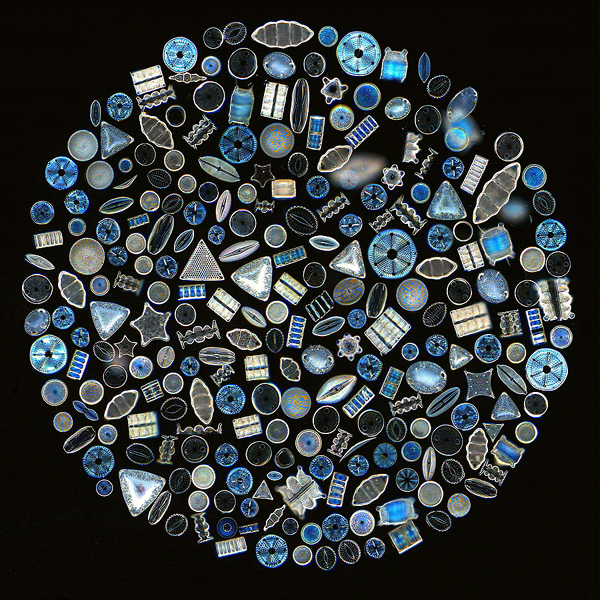Controlling Powderpost Beetles in Stored Lumber
Heat plus good hygeine are the standard recommendations, but this discussion also considers some alternative notions. November 14, 2009
Question
I continue to be frustrated by powderpost beetles getting into the stacks in my drying shed. I have looked through the archives and seen what is required to kill them if they are in the wood, but what about keeping them away from the wood in the first place? Isn't there something that I can spray all around my shed and on top of the stacks that is offensive to them and will keep them away, that isn't toxic? I tried orange oil and I know now that it definitely doesn't work.
Forum Responses
(Sawing and Drying Forum)
From Gene Wengert, forum technical advisor:
The insects are outside the wood only for a short time. During that time, they would have to come in contact with any poison you sprayed. They may actually leave one piece of wood and get into another and never touch the ground where you sprayed. If there was an effective spray, it would have to have a long life to be active over a long period of time as we never know when they are going to hatch and be active outside the wood. A long life insecticide is usually quite hazardous to humans. So, the bottom line is that there is no spray you can use safely and effectively.
However, if you can totally clean out your dry shed, including removing the wood dust and debris, and then put in wood that has been kiln-dried over 130 degrees F (probably 150 F or hotter is best) and has not been stored anywhere after kiln drying, and if the shed is closed to prevent them from flying into the shed from a source outside, you will have very effective control.
Once you have an infestation, as they spend most of their life in wood and are not easy to detect at that time as they may take two years to hatch and leave the small holes and powder, you must remove all the wood and debris from the storage area, as mentioned. The removed wood can be heat treated to kill the insects and eggs (stopping further damage and their spread) and then immediately returned to the cleaned, insect free storage building. Failure to do this means that any lumber that looks ok may actually have the insects inside and so they will continue to spread.
Special note: you cannot spray the lumber with an insecticide and then sell the lumber without also including all the necessary CIS sheets so that the buyer knows what chemicals are there. If the buyer planes the lumber and then the planer shavings have the chemicals, the shavings may be a serious problem for chickens, wood fuel systems, etc. Borates have been suggested at times for control and they are safe, but you must coat every bit of the lumber and the solution is a water-based solution that must be kept liquid for a long time so the chemical can diffuse into the wood. Hence, borates for dry wood are not usually acceptable.
From the original questioner:
Thanks Gene. I was actually thinking about some compound that wasn't necessarily an insecticide, but had a smell which they were averse to, so they would stay away. My drying shed is not enclosed completely. It has a tarp roof and shade cloth down to 18" so air can flow through, so bugs are free to fly in.
From contributor J:
I have some turning stock that has PPB’s. Someone told me that putting it in your freezer will kill them. I'm seeking a second opinion on this.
From contributor B:
An old gardening trick I used seemed to work extremely well but, it will require a little extra work before using the lumber. I dusted the each layer of lumber with the pesticide "Blue Dragon" and had zero bug problems. Just keep in mind before using to spray water on the face side of the lumber before. I figured if it's good enough for my beans surely it will work on lumber, and it did.
From contributor G:
This is not my area of expertise, but when I saw "old gardening trick", a memory popped up. First - Googling Blue Dragon reveals that the active ingredient, Carbaryl, degrades to nothing after a month or so.
Back in the day, we used diatomaceous earth as insecticide. It is not poison. It is composed of the silica (glass) remains of microscopic creatures, diatoms, that are extremely sharp and will rupture the exoskeleton of any insect and kill it. Perhaps Gene knows if it has been used for PPB control.

Click here for higher quality, full size image
From contributor O:
Just speculation, but might diatomaceous earth be a little abrasive to be using on wood that will have to be machined?
From contributor G:
No more so than any other mud, sand or dirt. It isn't abrasive to the touch. The shells are microscopic.

Click here for higher quality, full size image
From Gene Wengert, forum technical advisor:
Legally, we can only use insecticides that are approved for wood. That is because some insecticides do affect wood for a long time, wood dust issues, etc. They also create human health issues. The PPB season can last for two years, so a short-lived treatment is not effective. Carbaryl has a half-life of four months (not zero in one month), which means it is half as strong in four months. This certainly would not be acceptable for dry wood as we would likely be planing, creating dust, etc within that time frame. Do not use this chemical on wood. It is very dangerous for humans.
From contributor D:
To avoid having your sheds acting as the host for the beetles keeping them painted helps. A bath in borate beforehand would help. You can look up the MSDS on Timbor or Boracare to get the skinny on it. The beetles are really at home here, I can see waves of them in the air and working my wood during a hatch. I dip high starch woods for my use in a solubor/water mix as I sticker it. Not environmentally friendly but they will not attack wood painted with used motor oil either.
From Gene Wengert, forum technical advisor:
As the lyctid powderpost beetle only goes into hardwoods, if a shed is made of softwoods, there is no risk from the shed's wood. The recent hurricanes have resulted in a lot of wood down and infested in the woods that can easily fly into a shed. The PPB is not as uncommon as in the past.
From contributor W:
Dr. Wengert, I would be interested to know what you know about diatomatious earth as an insecticide, as contributor G spoke about. I could imagine that applying it would be a bit of a trick.
From Gene Wengert, forum technical advisor:
There are two issues: first is stopping existing activity within the wood. This activity can be substantial. There is no outside indicator of such activity. Second is stopping re-infestation. The insects lay their eggs on or near the surface in a crevice. When the eggs hatch, then they bore into the wood is very small holes that are next to impossible to see. They then do a lot of interior damage. Finally, one day (up to two years or even longer from when the eggs were hatched) they decide to leave the wood, boring a hole to the outside (and that is what we see and where the fine dust or frass comes from).
Diatomaceous earth consists of fossilized remains of diatoms, a type of hard-shelled algae. To be effective, the insect must eat some of this material and then the hardness damages their internal digestion. So, at what point are the insects eating the wood on the outside of the lumber (assuming that the outside of the wood is all that is treated)? They have to be doing more than just boring the hole, but they have to be eating the wood.
When they are exiting, they are not eating that much wood; they are boring the hole. I do not know if this material works on PPB, but from ym knowledge of how the insect works, I have my doubts as to its effectiveness. Just after the eggs hatch, they may be eating wood, but they also may be beneath the treated wood. Will the diatomaceous earth be fine enough to get into the small crannies where the eggs are laid? This material is indeed an insecticide, but it may not work for this PPB.
From Gene Wengert, forum technical advisor:
Incidentally, diatomaceous earth is a mild abrasive, so it will dull tools, such as planer and jointer knives, working on the surface. Someone who sells lumber with this material on the surface would have to advise the buyer of this material as it is not expected and will affect processing. Someone who burns this material will note increased ash. The material may also come off the lumber as the lumber is handled and bumped around and enter the air. The material may also be able to come through dust collectors and re-enter the processing plant air. As I read the info on this product, it is not safe for humans to breath.
From contributor G:
A minor correction - bugs don't have to eat it - merely come in contact with it. The sharp points of the diatoms penetrate the exoskeleton of any insect that comes in contact with it. They die of 1000 stabs, so to speak. It does have drawbacks - for one, it has no half-life. Any insect coming around the treated wood will die, honey bee or butterfly included. I don't know if the dust is harmful to people specifically for that quality, though. Most dust is harmful if inhaled and ordinary precautions will suffice. It doesn't need a thick application, either. A light dusting will do.
From Gene Wengert, forum technical advisor:
The larvae (which is what happens when the eggs hatch) do not crawl around on wood, but seem to go directly into the wood. I am not sure if this is enough contact with the dust, as they are going directly in and as soon as they have entered, they are safe as the dust does not penetrate into wood. Incidentally, I believe larvae do not have an exoskeleton, but this dust material does work in gardens on larvae.
From contributor C:
Diatomaceous earth is sometimes used as a de-wormer in horses. It does no harm to the horse (the organs have a thick enough 'skin' not to be cut through), but it does cut up the worms enough that it kills them.

